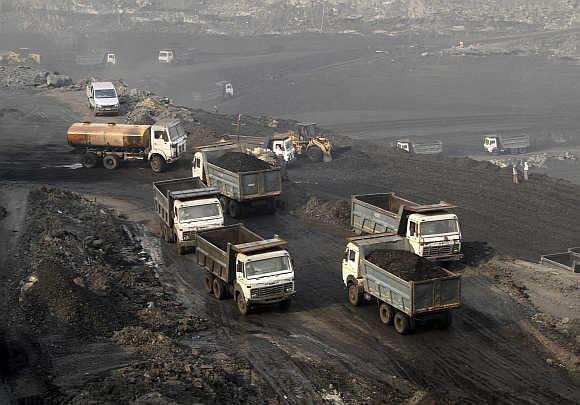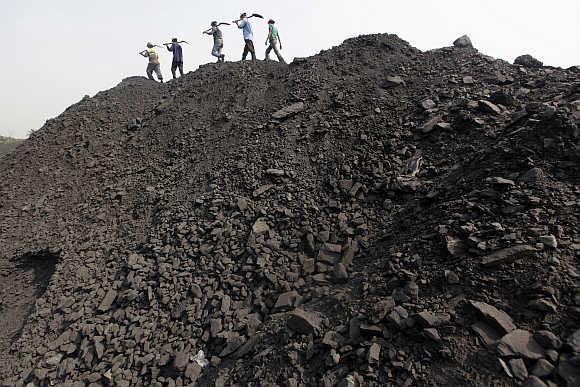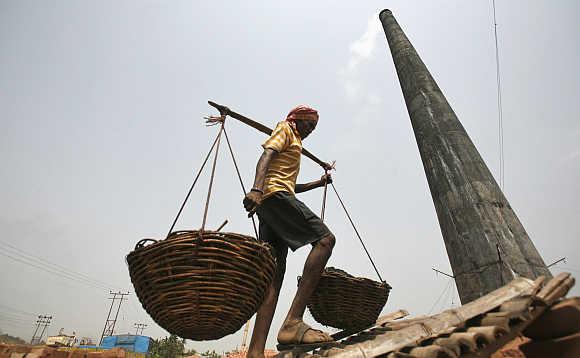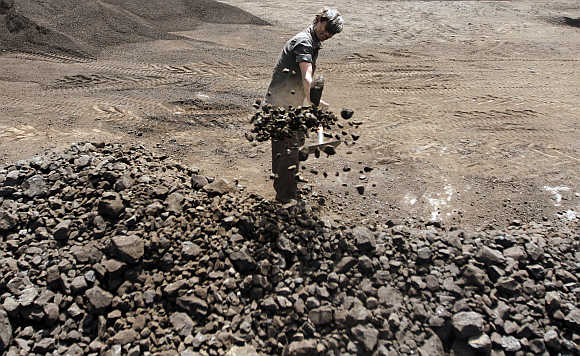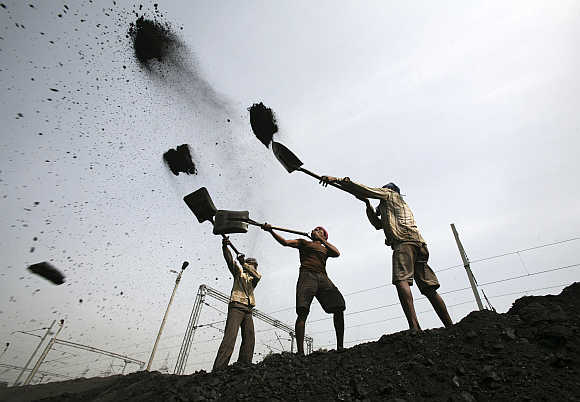 | « Back to article | Print this article |
Will splitting Coal India solve the power crisis?
Splitting Coal India Limited could increase competition and hence make production more efficient, but opinion is building against it.
It is not unusual for employees to question the rationale behind the restructuring of their company. But when the minister in charge for the sector himself says he is not convinced about the idea, the voices of discontent certainly become more prominent.
Earlier this month, Coal Minister Sriprakash Jaiswal stated in no uncertain terms that he was not in favour of splitting state-owned Coal India into smaller units. Coal India is set to hire a consultant to look into a proposal to restructure the organisation in order to make it more competitive. However, not everyone is convinced it is a wise move.
CIL, the world's largest coal miner, accounts for 80 per cent of the country's coal production and controls billions of tonnes of reserves. Its operations encompass seven wholly-owned mining subsidiaries - Eastern Coalfields, Bharat Coking Coal, Central Coalfields, South Eastern Coalfields, Western Coalfields, Northern Coalfields and Mahanadi Coalfields - along with an in-house consultancy, the Central Mine Planning & Design Institute.
The idea of restructuring the state-owned coal producer was first mooted by the T L Shakar Committee on coal sector reforms in 2007. J J Irani of Tata Sons, who was a member the committee, had then warned of “pronounced coal shortages” over the years, precisely what the country is now experiencing.
Click NEXT to read more...
Will splitting Coal India solve the power crisis?
However, the Shakar Committee in its recommendations stopped short of an overhaul. The panel only favoured tweaking at the board level to make the chairman and managing director accountable for the performance of the subsidiaries as well.
It suggested the chairman and managing director of CIL be re-designated as the chairman of all the CIL subsidiaries and that a new position of vice-chairman be created for CIL. It was only much later that a task force on national security headed by former national security adviser and cabinet secretary Naresh Chandra on securing and developing natural and technological resources of strategic importance came up with the idea of breaking down the company into separate entities.
Taking this forward, the 12th Five-Year Plan document laid the roadmap for spinning off the CIL subsidiaries as separate public sector companies. The idea was to “encourage them to develop their own strategies of coal development, including joint venture activities and acquisition of assets abroad.”
There can be no denying that the economy is now ravenously short of coal. Power generation capacity of about 50,000 MW that has come up over the over the last five years is either stranded or operating far below capacity because of coal shortages.
Click NEXT to read more...
Will splitting Coal India solve the power crisis?
The Planning Commission estimates that coal imports could go up to 185 million tonnes (MT) at the end of the 12th Plan based on total coal demand of 980 MT and domestic supply of 795 MT. Coal imports have increased from 73 MT in 2009-10 to 135 MT in 2012-13.
But is splitting CIL the answer to the country’s coal woes? Chairman and Managing Director S Narasing Rao says: “I am not sure what the plan is and what they want to do. Let the consultant come out with a report, then perhaps I will be in a position to give my opinion.”
A number of people who have been associated with CIL say the results of this exercise won't be as desired. More than ramping up production, the move would cause more operational issues, especially related to coordination, they say.
In the current system, CIL officials belong to a separate cadre who can be transferred from one subsidiary to another. “If you need an officer for a particular project, the chairman and managing director can post anyone from any of the subsidiaries in a short time. The project does not get affected and you do not have to go through the long recruitment process,” says a senior CIL officer who does not want to be named. There are other issues as well.
Click NEXT to read more...
Will splitting Coal India solve the power crisis?
At present, CIL has to cooperate with the Railways for transporting coal. If the company is broken down into separate entities, the operational advantages that it currently enjoys will be lost, says the official.
Senior CIL functionaries are also not convinced that expanding the role of the chairman and managing director to that of chairman of all the subsidiaries will change things on the ground. Former CIL boss Partha Bhattacharyya says, “Directors of CIL are already on the board of subsidiaries and there is enough coordination. How can the chairman and managing director be made responsible for all the companies? He will have no work but only to attend meetings throughout the day. Also, the chairmen of all the subsidiaries report to the chairman and managing director. Their appraisal is done by the chairman and managing director only.”
Bhattacharyya also thinks splitting CIL won't serve any purpose. “If the aim is to ramp up production, then clearance issues should be addressed. Today, CIL is a big company; it is getting due attention from the prime minister's office, which is helping it get the clearances. If it is split and made into eight companies, their voices will hardly be heard,” he says.
Click NEXT to read more...
Will splitting Coal India solve the power crisis?
Niladri Roy, general manager of Eastern Coalfields, which would get the status of an independent company if the restructuring happens, says the restructuring will have its own advantages and disadvantages.
“The split may help the subsidiaries in some cases. For example, for a high-cost mining equipment, tender is done by CIL now. This creates some delay. But, for taking some critical decision, the current structure helps as CIL can directly coordinate with the coal ministry. If seven subsidiaries come up with different views, it will be difficult to coordinate,” says Roy.
Obviously, things are not going to be easy for CIL. The restructuring proposal is also facing opposition from the workers' union. Jibon Roy, general secretary of All India Coal Workers Federation, has said the federation will register its protest on the government's disinvestment and restructuring proposals.
Analysts, too, do not seem enthusiastic about the restructuring move.
Click NEXT to read more...
Will splitting Coal India solve the power crisis?
“This will hardly have any bearing on coal production. Anyway, the subsidiaries have their separate plans and strategies. They maintain their own balancesheets,” says Rupesh Sankhe, research analyst at Karvy Computershare, a financial consultancy.
There is also a big question mark on how much the move will help in addressing the real issue behind coal shortage - tardy work and delay in permits. “The Coal Nationalisation Act should be done away with if the government wants to address the real problem. Let private players come into the sector, instead of creating artificial competition by making subsidiaries independent. The CIL IPO showed how much interest global players have in CIL. Why then this attempt to disturb the company?” says Bhattacharyya.
Sector specialists say before privatisation can take place, a coal regulatory body will have to be set up to look into the issues related to pricing, among other things.
